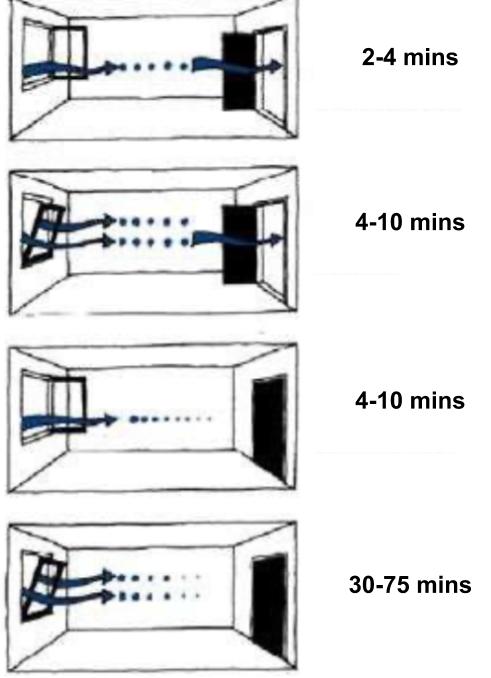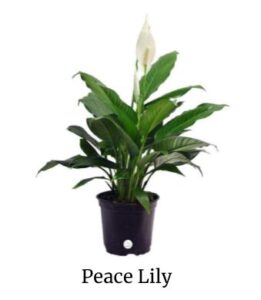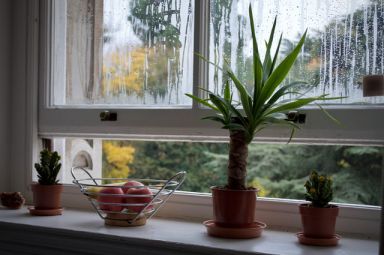1. Become Aware of Toxic Sources
VOC’s (Volatile Organic Compounds) are chemicals that dissipate as a gas into the air at normal temperatures found within the home. This is called offgassing. Not all VOC’s are toxic, but many synthetic chemicals are. Becoming aware of some sources of toxic VOC’s, and making substitutions, can significantly improve your indoor air quality.
Potential Sources
- Paints
- Markers, glue, and liquid correction fluids
- Air fresheners
- Perfumes and colognes
- Cleaning sprays, fluids, and compounds
- Office equipment such as printers and copiers
- Synthetic carpets and underpads
- Synthetic drapes and furniture fabrics
Some of these can be substituted easily while others are going to be more challenging to fix. Switching out toxic cleaning supplies for healthier options is a great way to improve your indoor air quality. The Environmental Working Group (EWG) has an excellent website which helps you check the toxicity score of different cleaning products. EWG has another database for helping you choose healthier personal care products. Using an essential oil diffuser for air freshening is another great strategy. Also, creating your own cleaning products using essential oils is pretty simple and cost effective. Check this database for great recipes. When you can’t easily substitute a product, ensure you are refreshing the air by opening the windows frequently.
2. Use That Exhaust Fans
Exhaust fans can greatly improve indoor air quality when cooking and showering. As long as your exhaust fan is vented outside, you should be using it every time you shower and cook on the stove. Cooking can be a leading cause of air pollution and showering without a fan increases humidity levels. When humidity levels rise, so does the likelihood of mould. When you turn the fan on you should also be cracking a window at the same time. The fan generates suction, creating negative pressure and a need for replacement air. Fresh outside air is your best bet. Otherwise air will be pulled in from less desirable locations (floors, walls, plumbing penetrations, etc) picking up dust and debris along the way.
3. Know Your Humidity Levels
When you limit your humidity levels, you limit mould’s ability to thrive. Inspect for existing mould around water fixtures and appliances. Look for leaks, stains, dripping water and damaged materials. Clean it if you can, or replace the material. Maintaining optimum humidity levels between 35% – 55% is a great indoor air quality strategy. Chronic mould exposure can wreak havoc on your immune system and mould only thrives in humidity levels above 55%. Purchasing humidity gauges and ensuring that you keep your levels in check can dramatically improve your air quality. Using a dehumidifier may be necessary.
4. Open Your Windows
Open up your windows and allow fresh air in! This is an easy and effective way to flush out the old, toxic air. Our modern homes are built very tight for energy efficiency and this allows a greater buildup of pollutants. There are many benefits to opening your windows:
- Provide sufficient oxygen
- Avoid increased levels of pollutants
- Avoid odour pollution
- Regulate humidity (depending on the climate)
- Reduce levels of microorganisms in the air
- Supply negatively charged air ions
Depending on the season there are guidelines for how long you should be airing out your home each day.

Every space is different, see the diagram below for more specific guidelines depending on your room’s configuration.

Note: If you’re in a hot, humid climate you would need to have a humidity reduction plan in place at the same time.
5. Check for Radon
Radon is a naturally occuring, radioactive soil gas. It seeps into the home and builds up in spaces which are tightly constructed, and not allowed to vent. An initial radon test should be done on every home to better gauge if further investigation is necessary. Radon is the second leading cause of lung cancer, and present in many homes. It can vary quite a bit from home to home and even from season to season. Testing is the only way to know for sure. Radon.com has good, reliable test kits for an initial assessment, or you could use a continuous tester to determine short and long term trends in levels.
6. Use Plants
Plants not only look great and add a peaceful energy to the home, but they also scrub pollutants from the air. Certain plants are more proven than others in doing this and having these plants in your home will improve your indoor air quality. Try including some of these proven air purifiers:




These indoor air quality boosters are all low maintenance and do a great job of removing VOC’s and other toxic compounds from the air. An added bonus is increased oxygen levels in your home. The Snake Plant converts CO2 to oxygen at night, so including a few of these plants into your bedrooms is a great strategy.
Implementing these 6 tips will help improve the indoor air quality of your home. This will strengthen your immune system, giving you more resilience to sickness and disease.


